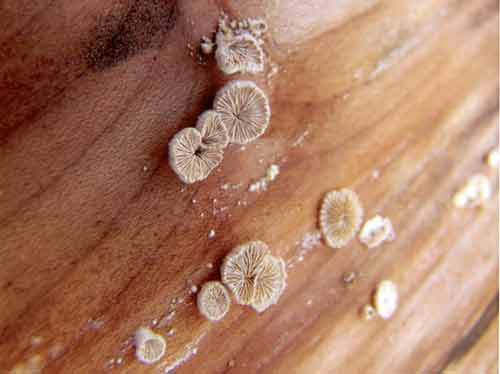Preventing Moisture-Related Problems in Residential Wood Framing
Solar Heat Gain Coefficient
The solar heat gain coefficient (SHGC) measures how well a product blocks heat caused by sunlight. SHGC is expressed as a number between 0 and 1. The lower a window's solar heat gain coefficient, the less sun-induced warmth it transmits into a building or house.
According to the U.S. Department of Energy, the solar heat gain coefficient of clear double-strength glass is 1.0. Glass with a solar heat gain coefficientt of 0.5 transmits half of that solar energy, and glass with a solar heat gain coefficient .75 transits three-quarters of that let through by clear double-strength glass. As the measure of effectiveness of blocking sun and heat, the shading coefficient is what drives air-conditioning loads. The lower the number, the more solar heat it resists, and the lower the cooling costs. Low SHGC ratings are most important in southern regions where outside temperatures are hot and cooling costs are traditionally high.
Visible Transmittance
The Wood and Moisture Relationship
Wood is an organic and porous material that absorbs moisture. The combination of wood and moisture creates a feeding ground for microbial agents like mold, rot fungi, and termites. The effects of these agents to the wood structure they attack can be devastating. By better understanding these threats, building professionals can make preparations to prevent against the invasion of the living spaces they design. Surprisingly, the best protection against each wood menace is to better control the wood's moisture absorption.
Mold is a fungus that eats wood. More specifically, mold secretes an enzyme that breaks down the cellulose in wood products into smaller pieces, so it can be absorbed. The process discolors and ultimately destroys the host material. In order for mold to grow and reproduce it requires an environment rich in oxygen, a food source, an acceptable temperature, and a sufficient amount of water. Typical indoor environments readily provide all of these factors-except one. Mold requires a higher quantity of moisture in the air than is comfortable to humans. The best defense against mold in buildings is moisture control.
Decay fungi are living organisms that invade damp wood and use the cellulose inside as a food source. Gradually, this rot fungi decomposes the wood and destroys its strength. Rot fungi, also called wood rot, can cause the decayed area to look brown and crumbly or create a white or yellow discoloration with a spongy texture. Some rot fungi can grow for long periods of time without producing any external evidence of the internal destruction, while others produce visible fruiting bodies on the surface of the decaying wood. When previously dry wood is exposed to moisture, either by being laid on moist soil or being located in a moisture-rich area of a house, it is likely that wood decay problems will occur. Most wood rotting fungi must have a direct supply of water at the site of the decay. The key to preventing rot fungi is to control the presence of moisture inside the wood.
|
Termites, subterranean and Formosan, also threaten the structural integrity of wood framing components. These insects eat the cellulose in untreated wood. Although termites are often considered a pest problem, they are also a moisture-related problem. Termites, often referred to as white ants, lack the typical insect exoskeleton, and, instead, appear milky and white and almost larval. This soft body makes them vulnerable to drying out, so termites must keep their homes moist and are attracted to moist food supplies like damp or rotting wood. Most termites are actually blind and navigate using scent and moisture trails. Formosan termites, normally existing in the Southeast United States, are especially voracious and are capable of infesting homes by air and building nests in the wall systems of homes. Termites can create their nests inside their food source and when they do so, they share their homes with fungi and bacteria that help them to destroy the wood.
Preventative measures that can be taken during home construction to help protect a home against termite infestation include: making sure that lumber and other wood components do not come into contact with the soil, placing a moisture barrier under basements to keep the area dry, treating wood components with a pesticide that make them unappealing to the termite palate, and ensuring that the wood in the home envelope is kept as dry as possible. To make an already constructed home less attractive to termites, start by eliminating moisture problems and remove excess food sources like firewood, lumber, paper, and tree stumps from the immediate surrounding area.
Some indications that a home may be infested with termites include: a temporary swarm of winged insects in the home or in the soil around the home, cracked or bubbling paint, frass (termite droppings), mud tubes on exterior walls, and wood that sounds hollow when tapped.










